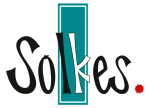Cologne (Köln in German) lies right on the banks of the Rhine River and is one of those cities that embraces you from the very first moment. It strikes a perfect balance between ancient history and a modern, joyful, and lively atmosphere. Its impressive cathedral, unique festivals, and the warm spirit of its people make it a must-visit destination—at least once in a lifetime.
A Brief History of Cologne
Cologne’s history is deep and fascinating, marked by cultural encounters, wars, reconstructions, and remarkable resilience.
Long before the Romans left their mark, the area was inhabited by the Germanic tribe of the Eburones, who were annihilated during a retaliatory campaign led by Julius Caesar. Later, in 38 BC, the Ubii—another Germanic tribe—were resettled by the Roman general Marcus Vipsanius Agrippa in this vacated land.
They chose an island in the Rhine as the center of their new settlement, a natural elevation protected from flooding, located roughly between today’s Heumarkt and Alter Markt neighborhoods. This enclave, known as Oppidum Ubiorum, marked the beginning of the city’s Roman era. In 50 AD, the settlement was elevated to the status of a Roman colony under the name Colonia Claudia Ara Agrippinensium, becoming one of the most important urban centers of the Roman Empire north of the Alps.
During the High Middle Ages, Cologne remained a key hub in Central Europe.
In 455, the Franks took the city, and by the 6th century, under Clovis I’s reign, it became the capital of a region of the Frankish Kingdom. The coexistence of Latins and Franks led to a rich cultural blending, still visible today in the mix of dialects and the Franks’ adoption of Roman techniques in areas such as architecture and glassmaking.
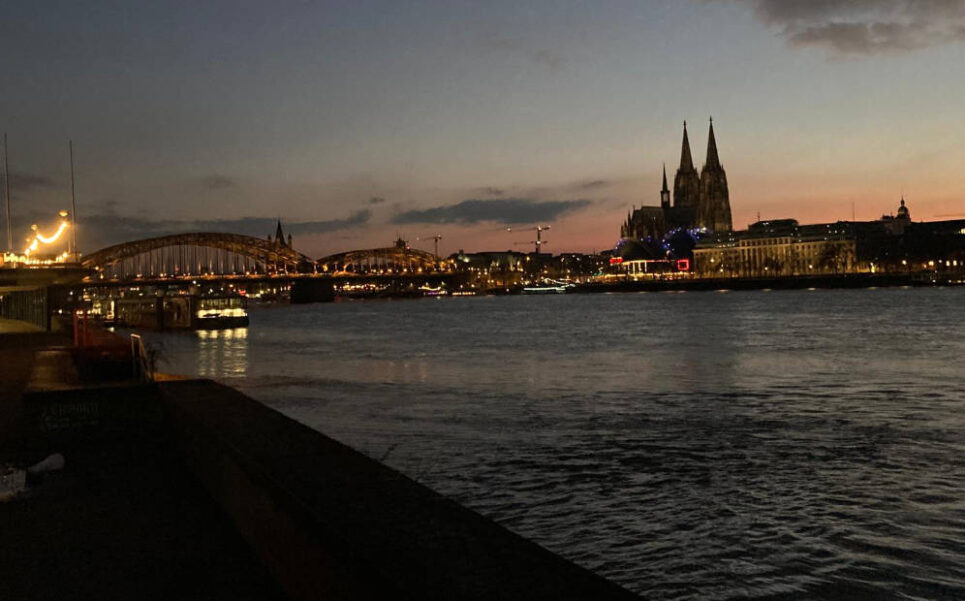
However, not everything was stable. In 862, the city was attacked by Vikings, who sailed up the Rhine in their drakkars, looting and terrorizing the region. After multiple attacks and the imposition of tributes, the citizens decided to reinforce the old Roman walls, which would later protect them from the destruction that befell neighboring cities like Bonn or Andernach. This fortification was just one of many defensive transformations Cologne underwent during the Middle Ages.
In the height of the Middle Ages, Cologne had around 40,000 inhabitants, making it the largest city in the German-speaking territories. To protect its growing population and wealth, an impressive 7.5 km long wall was built, featuring 12 gates—some double, some with a single tower—52 defensive towers, and 22 forts. Completed around 1250, this wall rivaled the size and strength of Paris’s, solidifying Cologne as a fortified city of major importance.
Later, during World War II, the city was devastated by bombings, losing much of its historic center. Miraculously, the cathedral survived—standing as a symbol of hope and resilience. The reconstruction that followed was meticulous and determined, blending tradition with modernity.
Today, Cologne is a multicultural metropolis that has preserved its Roman and medieval heritage while positioning itself as a hub for innovation, contemporary art, and openness.
It is a center for media, technology, and contemporary art, and its open and tolerant spirit is reflected in its urban vibe. Today, the city buzzes with international festivals, design fairs, street art, and a vibrant cultural life—always keeping a strong connection to its history. In Cologne, the past and the present do not contradict each other: they embrace and tell their story to visitors naturally.
Cologne is a city where every corner tells a story and where past and present coexist in harmony.
Its history is undoubtedly a chronicle of resilience, adaptation, and rebirth. From its origins as a tribal settlement and its transformation into a key Roman colony to its role as a medieval stronghold and its recovery after the horrors of war, the city has constantly reinvented itself without losing its essence.
When to Visit
Cologne can be enjoyed year-round, but spring (March to May) and early autumn (September to October) are the best times to explore it. The weather is pleasant, the city is in bloom, and the cultural calendar is full of vibrant events.
One of the most anticipated moments is Cologne Carnival. This celebration transforms the city into an explosion of color and joy with parades, costumes, music, and an unmatched festive spirit. While the carnival usually takes place in February, the festive atmosphere often lasts into March.
As soon as the first rays of sunshine touch our winter-worn faces, the city turns from gray to green. Then it’s official: spring has arrived.
In April, the Kölner Frühlingsmesse offers a fair full of rides, culinary delights, and activities for the whole family. Before Easter, seasonal markets fill the old town with crafts, sweets, and charming decorations.
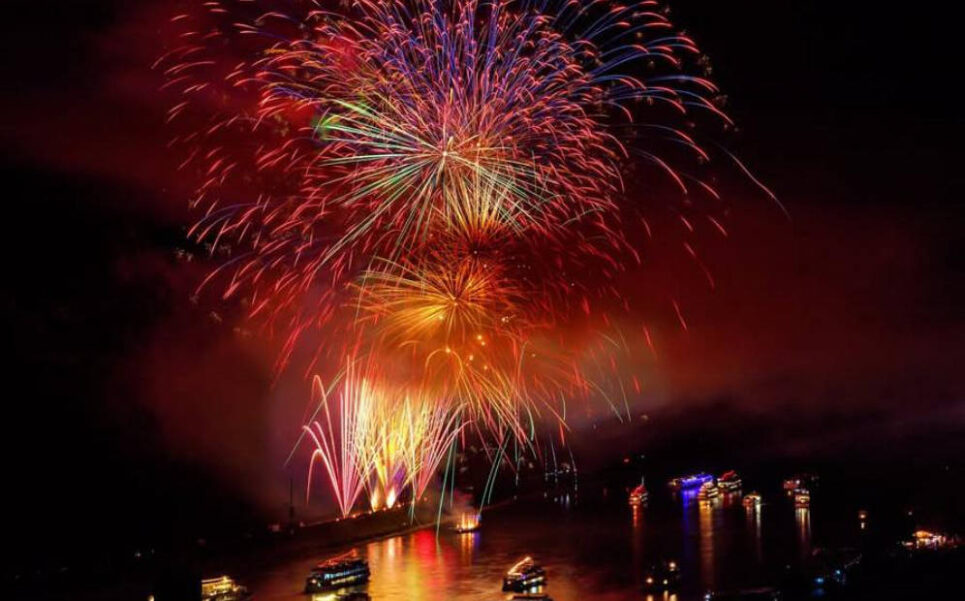
In May, Rhein in Flammen (Rhine in Flames) brings a magical experience with fireworks, illuminated boats, and a charming riverside atmosphere.
This event consists of five different firework displays along the Rhine River, held annually in various locations. Illuminated boats travel in a nighttime convoy, allowing passengers to witness the full display at each river location. The fireworks begin once the boats arrive.
During the fireworks in St. Goar and St. Goarshausen, the convoy pauses between the two castles, Burg Maus and Burg Rheinfels. Wine festivals take place along the riverbanks, attracting hundreds of thousands of visitors each year.
Parks and botanical gardens like Flora Köln burst with color and fragrance—ideal for walking, relaxing, or capturing moments with your camera.
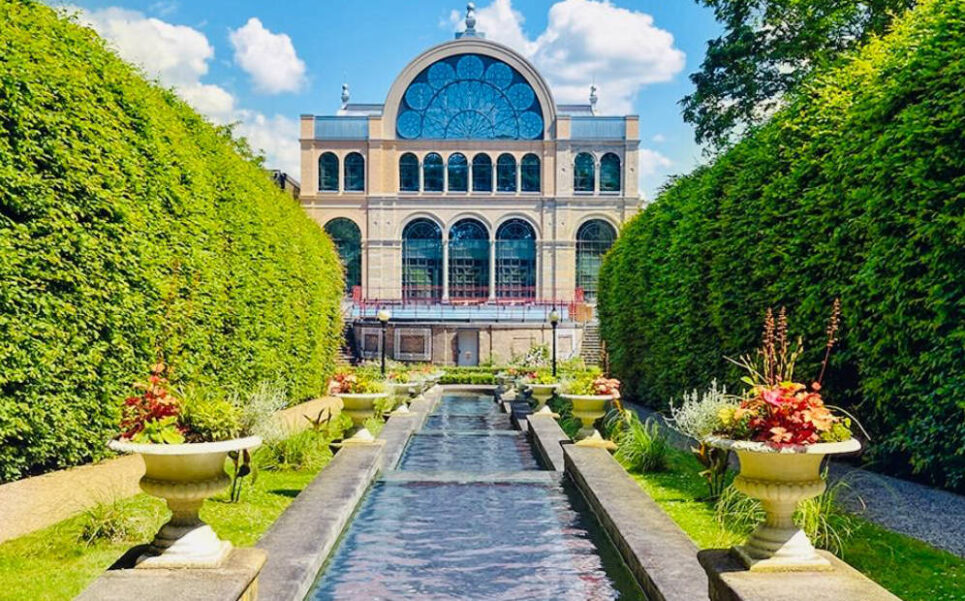
The garden is beautiful, designed by renowned landscape architect Peter Joseph Lenné, adding historical value.
More than 12,000 plants spread across 11 hectares can be admired here. Especially in spring, when everything begins to bloom, this green oasis in the heart of the city is worth a visit.

One of the highlights is its stunning and diverse plant collection featuring flora from around the world.
But if you visit in summer, you will see that Cologne becomes even more vibrant. In July, Cologne Pride (Christopher Street Day) is one of the most important LGBTQ+ events in Europe.
Cologne Pride includes a wide range of events supporting the rights of gays, lesbians, bisexuals, transgender, queer, intersex, and asexual individuals, as well as other marginalized groups.
It’s one of the largest gay and lesbian events in Germany and a key celebration of LGBTQ+ culture and rights in Europe.
Cologne Gay Pride features a major city parade and a week full of festivals, parties, and political forums.
The parades and festivals are comparable to carnival celebrations, and the event’s political dimension has achieved significant advances in equality and rights for the LGBTQ+ community.
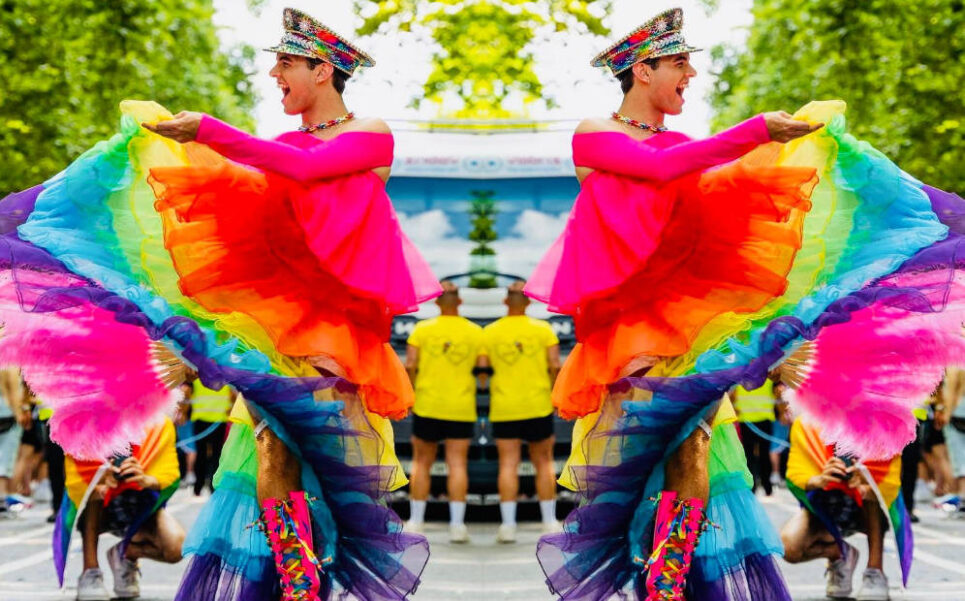
During July and August, KölnSommer offers music, theatre, and open-air shows.
Parks like Rheinpark become meeting spots where locals and tourists enjoy sunshine, concerts, and riverside sunsets.
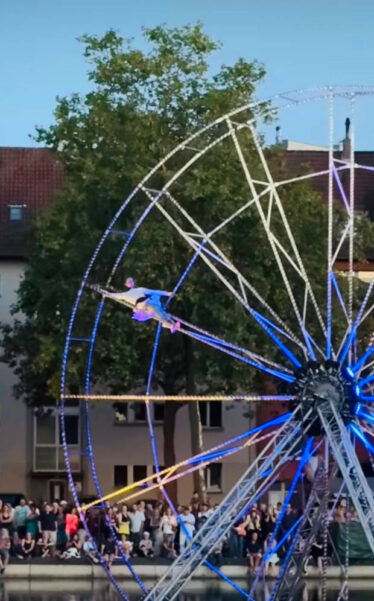
In September, the Wine Festival invites visitors to explore local wine culture with tastings, music, and pairings.
October brings Halloween-themed parties, especially in the old town, where decorations and ambiance bring cold nights to life.
In December, Cologne transforms into a true Christmas fairytale. Christmas markets take over the city with over 150 stalls offering everything from crafts to traditional Glühwein (hot mulled wine). The market in front of the cathedral is particularly magical, with lights, music, and warm aromas.
To close the year, fireworks over the Rhine light up the city on New Year’s Eve. In January, Cologne celebrates Three Kings’ Day (Dreikönigstag), followed shortly by Weiberfastnacht, marking the start of Carnival from a female perspective.
Getting Around
Getting around Cologne is easy. The public transport system—comprising trams (Stadtbahn), metro, and buses—is efficient and punctual.
You can get a day pass or the KölnCard, which includes public transport and discounts at museums and attractions.
Cologne is also bike-friendly. Bike paths, especially along the Rhine, let you explore at a relaxed pace. Apps like Nextbike or Lime make it easy to rent bikes and e-scooters.
The old town (Altstadt) and many main attractions are best enjoyed on foot. For a different experience, boat rides on the Rhine offer a fresh view of the city—especially at sunset.
Iconic Places to Visit
A visit to Cologne is not complete without climbing the imposing tower of the Cathedral (Kölner Dom). This gem of German Gothic architecture, declared a UNESCO World Heritage site, offers one of the most spectacular views of the Rhine and the entire city from its 533 steps.
Right outside the cathedral, the Old Town (Altstadt) invites you to wander through its narrow, cobblestone streets, lined with medieval houses painted in vibrant colors.
In the Alter Markt square, you can feel the traditional atmosphere, making it an ideal place to sit in a typical beer hall and enjoy a cold Kölsch, the local beer.
When crossing the famous Hohenzollern Bridge, you’ll encounter one of the most romantic postcards of the city: thousands of love locks hanging from its bars, with a unique panoramic view of the cathedral, especially at sunset.
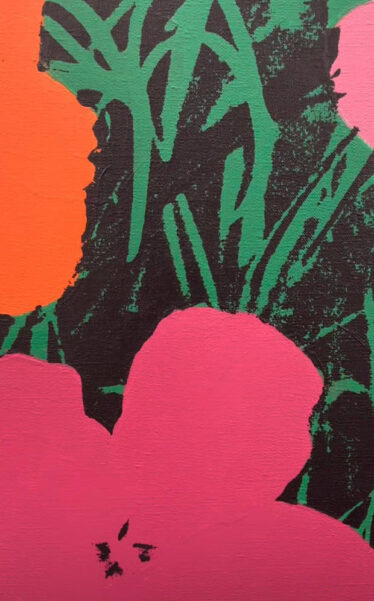
On the other side of the river, in the Deutz district, the KölnTriangle offers a modern viewpoint where you can admire the full silhouette of Cologne, perfect for photography enthusiasts.
Among the city’s most prominent cultural spaces, the Ludwig Museum deserves a prolonged stop.
Located in the heart of Cologne, it is one of the city’s leading cultural institutions. Opened in 1976, this museum houses an impressive collection of modern and contemporary art, particularly notable for its extensive collection of Picasso’s works.
The art collection spans from the 20th century to the present day, with over 5,000 pieces of art, including paintings, sculptures, and photographs.
One of the museum’s most striking features is its prominent collection of pop and minimalist art. Artists like Andy Warhol, Roy Lichtenstein, and Joseph Beuys are well represented, providing visitors with an immersive experience into the most innovative currents of contemporary art.
The museum also focuses on German and European art, with temporary exhibitions often featuring works by emerging and contemporary international artists.
The museum’s design is modern and bright, and its location near the Cologne Cathedral offers stunning views, especially from its terraces. Additionally, its location allows visitors to enjoy a complete experience in a culturally rich area, like the Old Town. With its impressive collection of modern and pop art, it houses works by renowned names like Picasso, Warhol, Lichtenstein, and Bacon.

Just a few steps away is the Chocolate Museum, a sensory experience that delights both adults and children. In addition to learning about the history of cocoa and seeing the manufacturing process live, the tour includes a chocolate fountain where you can taste this delicacy in its purest form.
In the museum, you can learn about the history of chocolate, the countries that grow cocoa, chocolate production, and much more. It’s a very interactive museum, so it’s genuinely fun for both children and adults.
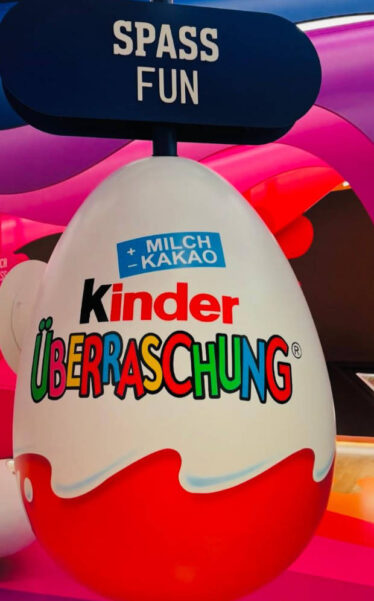
The best part of the museum is that they are actually producing Lindt chocolate inside the museum… and you can see it! You can end your visit with a stop at the store or café.
For a more peaceful and contemporary experience, a walk through Rheinauhafen is an ideal option.
This revitalized area along the river blends cutting-edge architecture with port history, featuring the buildings known as Kranhäuser, shaped like cranes. Here, between cafés, galleries, and walking or biking paths, you can experience a more modern and relaxed Cologne.
Finally, history lovers should not miss the Romano-Germanic Museum, which preserves mosaics, sculptures, and everyday objects that showcase the city’s Roman past.
All of this makes Cologne a vibrant destination, where every corner has a story to tell, and every step offers a new perspective.
Influential Figures
Cologne has been home to many influential figures who have shaped its culture and identity.
Heinrich Böll, Nobel Prize-winning author, is known for his descriptions of post-war Germany. He refused to join the Hitler Youth in the 1930s. After the war, he returned to Cologne and worked in his family’s carpentry shop and a municipal statistics office. He became a full-time writer at the age of 30.
The moving artistic work of Käthe Kollwitz focused on themes of war and human suffering. Kollwitz was the first woman to be elected to the Prussian Academy of Arts (the government arts council) and also received the honorary title of professor.
Jacques Offenbach, born in Cologne, made significant contributions to the musical scene. He was one of the most influential composers of the 19th century. Although he spent most of his career in Paris, his early life in Cologne played an essential role in shaping his musical foundation.
Albertus Magnus (1193-1280) was a philosopher, theologian, and scientist. He was one of the first to advocate for the coexistence of religion and science. He is considered one of the greatest intellectual figures of the Middle Ages and was canonized as a saint.
Ludwig van Beethoven (1770-1827) was a composer and pianist. Although Beethoven was born in Bonn, near Cologne, he spent a significant amount of time in the region.
These figures reflect Cologne’s rich and diverse cultural, intellectual, and historical heritage, influencing everything from politics and philosophy to music and art.
Hidden Treasures
Beyond the most well-known tourist sites, Cologne holds small treasures waiting to be discovered. One of them is the Belgian Quarter (Belgisches Viertel), a vibrant area with a bohemian soul. Its streets, named after Belgian cities, are filled with independent boutiques, cozy cafés, and contemporary art galleries. It’s a perfect place to stroll leisurely, get lost among creative storefronts, and enjoy a good coffee in the sun.
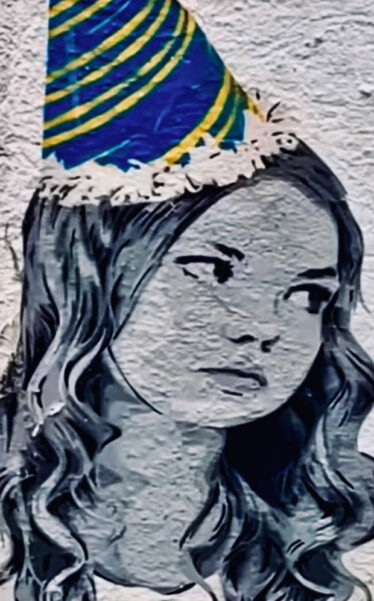
Street art is an essential part of the landscape. Colorful murals and graffiti cover façades and walls, bringing life to every corner. The neighborhood exudes creativity and is a gathering point for artists, designers, and lovers of the alternative.
Another fascinating corner is Ehrenfeld. This district, further from the center, has a unique energy. Its multicultural character is reflected in every street: Turkish restaurants, Syrian bakeries, African stores, hipster cafés, and small markets from Eastern Europe coexist harmoniously.
Here, too, street art takes center stage. From large murals to small messages hidden on walls, Ehrenfeld is an open-air gallery. Many creative industries also have their base here: design studios, independent concert halls, art workshops, and community cultural spaces that give the area its own rhythm.
If you’re looking for a quieter pause, the Church of St. Ursula is ideal. Located just a few steps from the bustling city center, this Romanesque church offers a peaceful refuge. Its beautiful stained-glass windows gently filter the light, creating an intimate and serene atmosphere.
Dedicated to the martyr St. Ursula, its history is full of legends. It is said that she led a pilgrimage of 11,000 virgins, and many relics inside the church recall this story. The robust architecture, typical of the Romanesque style, conveys a sense of permanence and mystery. It’s one of those places where time seems to stand still.
Culinary Delights
Food also tells stories, and in Cologne, they’re tasted with every bite. Kölsch beer is the heart of many conversations. It is served in tall, thin glasses called Stangen, always cold and in small quantities that are refilled without you asking.
The local cuisine is simple but flavorful. A typical dish is Himmel un Ääd (Heaven and Earth): mashed potatoes (the earth), apple sauce (the sky), and blood sausage. A mix of sweet and savory flavors that surprises with its harmony.
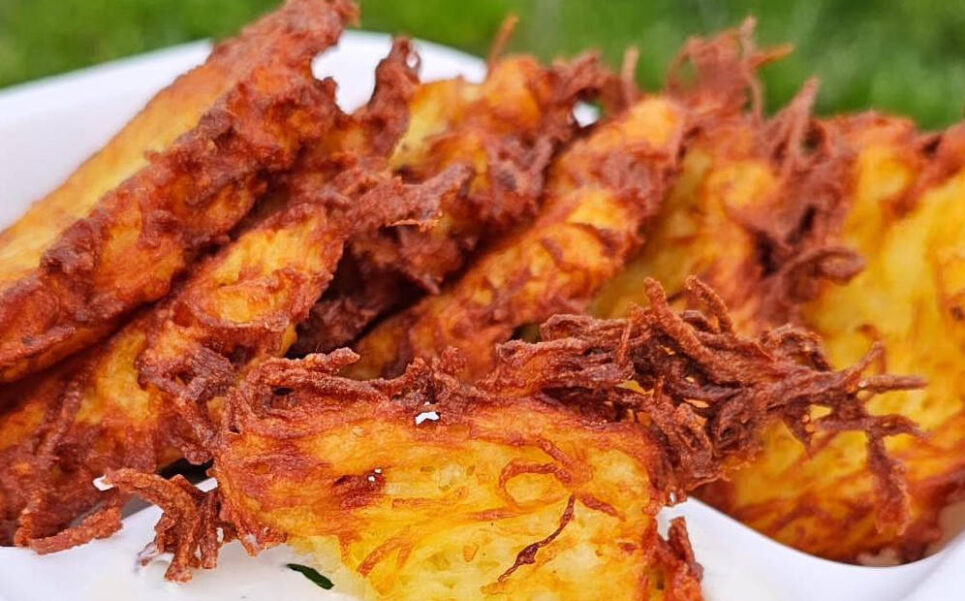
Another classic is Halver Hahn. The name is misleading: it means “half rooster,” but there is no chicken on the plate. It’s a rye bread roll with Gouda cheese, mustard, and onions. Simple, hearty, and perfect with a Kölsch.
Rievkooche, crispy potato pancakes, are served hot with apple sauce or sour cream. They are especially popular during Christmas markets or local festivals.
For cold days, nothing beats Ähzezupp, a thick pea soup with vegetables, sausage, and rye bread. Comforting and full of flavor.
And then there’s Cologne’s culinary humor: Kölsche Kaviar, which is blood sausage served with mustard on rye bread. A favorite in traditional beer halls.
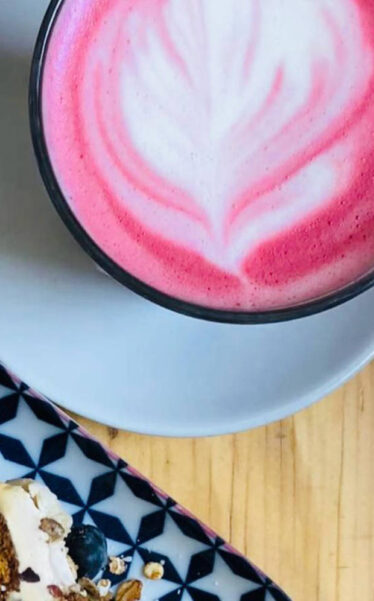
For dessert? Kölner Klöße are sweet dumplings filled with fruit, drenched in vanilla sauce. A little-known delicacy outside the city but beloved by locals.
While Cologne prides itself on its traditional dishes, its modern gastronomy is equally impressive.
From trendy vegan cafes to lively food markets, there’s something for every taste.
One of the best places to experience this blend of traditional and contemporary culinary culture is the Belgian Quarter (Belgisches Viertel), a gastronomic hotspot known for its bistros and modern restaurants.
I hadn’t counted on the fact that this city had so much to offer in terms of food, which was a very pleasant surprise.
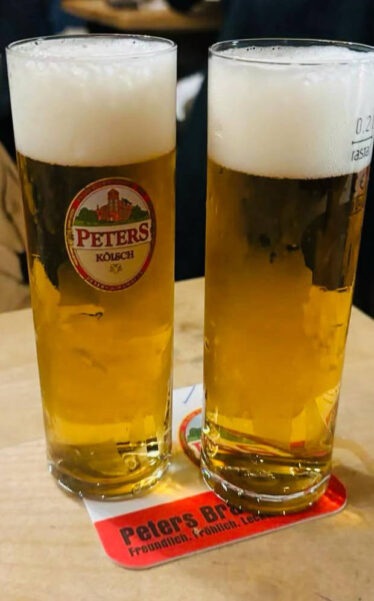
There are hundreds of fun places, with very tasty food and excellent ambiance.
On the other hand, I’m a big coffee lover. So discovering Spatz was absolutely perfect.
It had a small sunlit terrace, and from across the street, I saw large cups that seemed just what I needed for a real coffee break. Great service that exceeded all expectations!
Let’s be clear, in Germany, it’s common for a region or city to specialize in a specific type of beer, whose production and flavors have been perfected over generations of brewers. I believe this is especially evident in Cologne with Kölsch.
In Cologne and its surroundings, Kölsch is everywhere. You walk into any bar or brauhaus in the city, and you’re most likely to be served a Kölsch.
And depending on the type of bar, you might find other beer styles besides Kölsch, but they will most certainly be bottled, not on tap.
Locals hardly drink any other type of beer, so if you visit Cologne, you’ll see that Kölsch is more than just a drink: it’s an essential part of local identity and customs.
Most residents of Cologne feel a special attachment to their local beers, served in traditional narrow 200 ml glasses called Stangen.
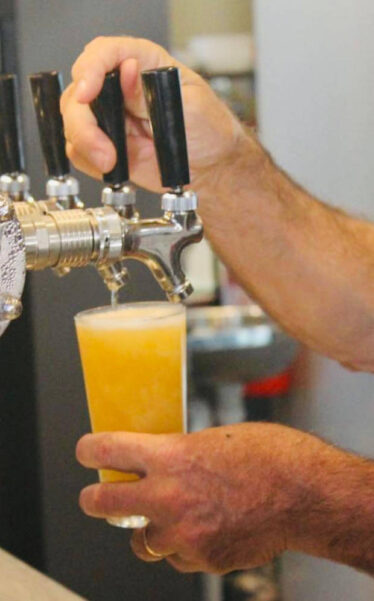
The Kölners (Cologne residents) are especially proud of Kölsch because it’s the only beer in Germany with a protected geographic status, similar to Kentucky bourbon or French champagne. But this is not so simple.
For a beer to be officially called Kölsch, German regulations stipulate that:
*** Brewers must make it according to the Kölsch Konvention, proposed by members of the Cologne Brewery Association.
*** Kölsch must also be brewed according to the Reinheitsgebot, or German purity law.
*** The brewery must be located no more than 30 miles (about 48 km) from the city. Historically, it was said that the brewery must be able to see the towers of Cologne Cathedral to be called Kölsch, though this radius has since been expanded.
Cologne is not only explored with the eyes but also with the taste. Every neighborhood, every dish, every corner has something distinct to offer. You just have to let yourself be carried away.
Conclusion
Cologne is a city that reveals itself gradually, like a book full of surprising chapters. Its history, deeply intertwined with European culture, mixes with a modern energy that pulses in every street, every square, every hidden corner. Here, the old does not conflict with the new: they coexist in harmony, creating a unique atmosphere that only Cologne can offer.
From its imposing Romanesque churches to its colorful urban murals, the city invites you to stop, look, and let yourself be carried away. Every stone in the old town echoes the past; every glass of Kölsch shared in a beer hall reflects the joyful and welcoming spirit of its inhabitants.
Exploring Cologne is like traveling through time while keeping pace with the present. It’s immersing yourself in a vibrant, diverse, and deeply human city. Whether you come for its history, its art, its food, or simply out of curiosity, Cologne always has something to tell. And it always makes you feel welcome.

